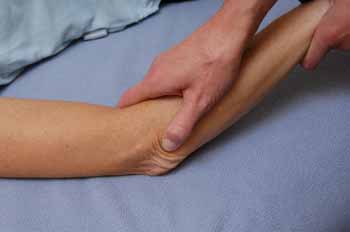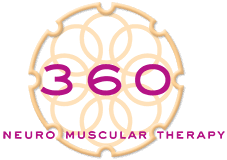TENNIS ELBOW (EPICONDYLAR PAIN)
Presenting symptoms
 A 50-year-old surgeon experienced severe pain on the outside of her right elbow. While conducting surgical procedures she awkwardly and continuously held her forearm in a flexed and slightly supinated position while gripping her instruments. Despite this misuse/overuse she had full strength in the forearm. She was starting to get intermittent ‘nerve pain’ at her lateral elbow even when lifting a coffee pot and opening doors.
A 50-year-old surgeon experienced severe pain on the outside of her right elbow. While conducting surgical procedures she awkwardly and continuously held her forearm in a flexed and slightly supinated position while gripping her instruments. Despite this misuse/overuse she had full strength in the forearm. She was starting to get intermittent ‘nerve pain’ at her lateral elbow even when lifting a coffee pot and opening doors.
Evaluation, clinical reasoning & treatment strategizing
Tennis elbow (or lateral epicondylagia) can be locally sourced from damaged and tight forearm extensor muscles and exacerbated by referred pain from trigger points in shoulder and neck muscles. Range of motion in her forearm tested poorly for both pronation and supination. The scapula-humeral rhythm test (straight arm raise) revealed tight latissumus dorsi muscles. In our experience, a thorough treatment must include muscles along the entire radial nerve pathway, from the neck to the axilla, to the hand.
Treatment
Pain was elicited from trigger points in the extensor carpi radialis brevis and longus and the underlying supinator muscle. Manual compression was alternated with a stretch sequence many times over in each session. NMT was applied to brachialis, brachioradialis, other hand and finger extensor muscles, and the distal triceps muscle. Inflammation was reduced with icing and Active-Isolated Stretching (AIS) was recommended between her treatments. Many trigger points in the latissimus were found and reproduced familiar pain at her elbow.
Outcomes and follow-up
Forearms can be notoriously slow to respond to therapy, partly because people still have to use the muscle while receiving treatment. Twelve sessions were necessary before movements became relatively symptom-free. She was given a self-care exercise to perform using a ‘flexbar’ to create eccentric (lengthening) contractions of the forearm extensors. Once the key trigger points in latissimus and triceps were resolved, fewer satellite trigger points in the forearm reappeared. The patient continues to receive NMT 1x/month for maintenance and prevention.







